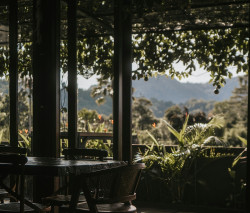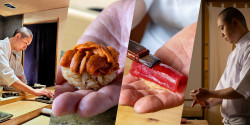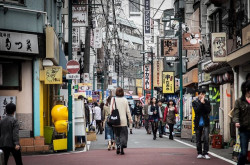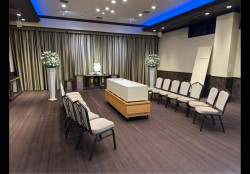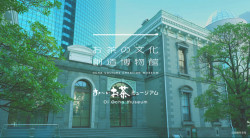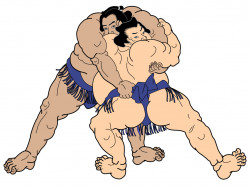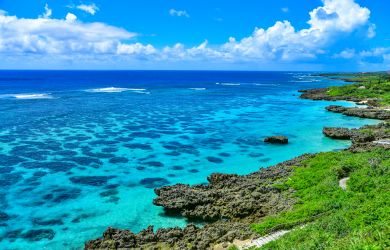
September 15, 2025
Tokyo Station Hotel: Old And New
The Tokyo Station Hotel is the centerpiece of Tokyo’s time-warp district
By Metropolis
Originally published on metropolis.co.jp in October 2012
Amid much fanfare, a grand new hotel reopened in 2012 as part of the refurbishment of Tokyo Station. Yet “new” isn’t quite correct, as The Tokyo Station Hotel originally opened in 1915 and saw more than 90 years of service until 2006, when it closed for major refurbishment. “Old” isn’t the right word either. The redesign tripled the number of rooms from the original, added a state-of-the-art spa, and introduced an interior design concept blending classic European features.
On its own, Tokyo Station remains a wonderful, iconic building in one of the biggest cities in the wirlkd. It also stands out in Japan as an early example of a European-style building designed by a native Japanese architect and has important literary associations. The hotel served as inspiration for the famous novels Niju Menso by Rampo Edogawa and Abo Ressha by Hyakken Uchida and was a favorite haunt of other famous writers like Seicho Matsumoto and Nobel Prize-winner Yasunari Kawabata.

The hotel also serves as a gateway to one of Tokyo’s most architecturally fascinating districts. Its blend of old and new is typical of Marunouchi, the prime strip of real estate stretching from Tokyo Station to the Emperor’s Palace.
After a period when minimalism triumphed, the implementation of a new city planning system, the reduction of tax burdens, and the provision of subsidies encouraged the preservation of historic buildings to maintain the character and vitality of the area. The area’s architecture reveals this fascinating narrative: a conflict between past and present, between the urge to sweep away old buildings and conserve them—a struggle that gradually evolved into a synergy that seeks the best of both worlds.
A fine example is the Mitsubishi Ichigokan Building, now home to the museum of the same name. To the naked eye this looks like a well-preserved late–Japanese Victorian building, but in reality the structure was constructed entirely from new building materials in 2009. Its only archaic aspect is the architectural plan—the same blueprints used to create an almost identical building that stood on the same site from 1894 to 1968. The English architect Josiah Conder (1852–1920) was headhunted by the Japanese government to introduce European architectural aesthetics to Meiji-period Japan. In addition to designing buildings, he also taught the first generation of Meiji-era Japanese architects, including Kingo Tatsuno, architect of the Tokyo Station.
Another hybrid of antiquated and cutting-edge architecture in the neighborhood is the Mitsubishi UFJ Trust and Banking Building. This metal and glass structure was developed alongside the preservation of the Club House of the Industry Club of Japan, a 1920s building that adds a touch of elegance to the larger complex. Then there is DN Tower 21, a modern office tower connected to the historic Dai-ichi Life Hibiya building designed by Jin Watanabe, which features elements of the modern Japanese Stripped Classicism style.
Many of Marunouchi’s early buildings were developed during this period, reflecting a distinctly Japanese interpretation of Victorian-era trends. From here, this style spread throughout Japan, a diffusion rooted in the fact that Marunouchi was—and remains—the literal center of Tokyo. The district sits directly in front of the Imperial Palace, the symbolic heart of Japan, and is anchored by Tokyo Station, the nation’s central rail hub named after the capital itself. It is also where Mitsubishi, Japan’s largest zaibatsu, established its financial and commercial headquarters, shaping the area’s identity as the country’s economic core. (The development of zaibatsu-associated areas like Mitsui’s Nihombashi district followed a similar trajectory.)
The aesthetic cultivated in Marunouchi did not stay confined to Tokyo. As Japan came to be seen as the most successful example of “self-modernization”—a nation that avoided European colonization while rapidly incorporating Western cultures—it became an influential model across Asia. Both through that and through Japan’s own colonial expansion, variations of this architectural style appeared across the Korean Peninsula, Northeast China, Taiwan and beyond.

The evolution of Marunouchi is part of an area plan including nearby Otemachi and Yurakucho, known as the OMY area. Shigenori Kobayashi, chairman of the OMY Area Management Association, emphasized the need to create an environment attracting people and steady revenue rather than the speculative capital that has been the blight of other neighborhoods. Part of their work was founded on recognizing differences from area to area and the complex ways these interact. Kobayashi explained that “Otemachi, the financial center, is zoned for skyscrapers. The Tokyo Station side of Marunouchi is zoned for relatively tall buildings, and the Imperial Palace side of Marunouchi is zoned for low-rise buildings.” He also noted that Yurakucho’s distinct urban character resulted in a commitment to “maintain its differences and preserve its disordered spaces.”
One of the problems financial districts often face is that they can become dead and uninviting after business hours. The association also worked to combat this problem. “Marunouchi’s Naka-dori used to be lined with banks, so it was always deserted after 3pm,” Kobayashi recalled. “We transformed it by introducing a number of boutiques and by providing an open public space on the Marunouchi side, thereby establishing design rules to revitalize the area.”
With The Tokyo Station Hotel serving as a centerpiece of the district, the revitalization has continued into the 2020s.
Japanese retro architecture…in Seoul? Read more to find out:
